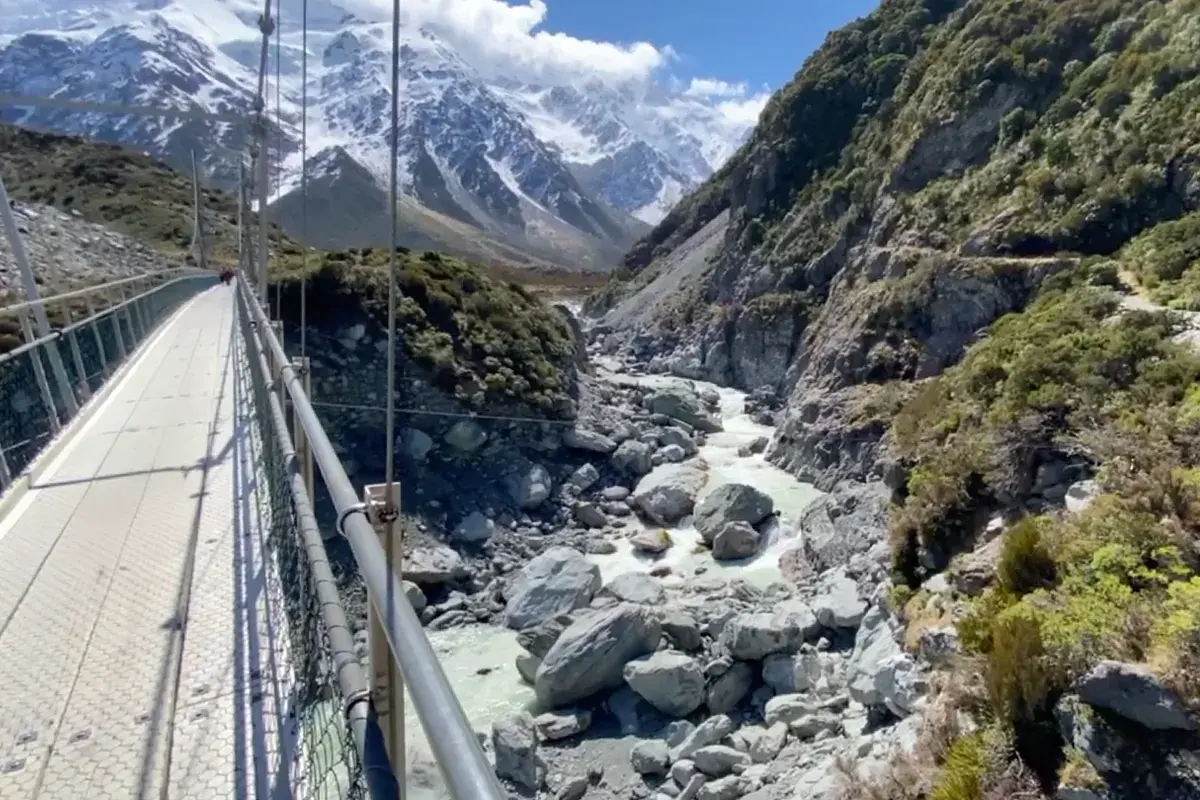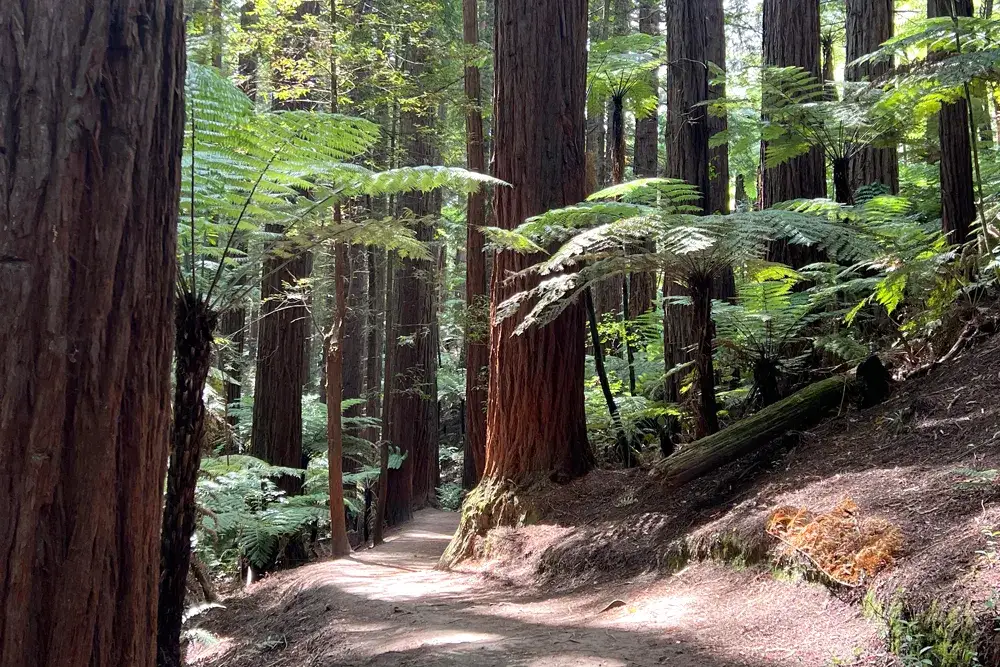Aoraki/Mount Cook Hooker Valley Bridge
If you’ve hiked the Hooker Valley Track to get views of Aoraki/Mount Cook, you’ll know the second swing bridge – the one with glacier-fed water flowing beneath and Aoraki/Mt Cook ahead like something from a postcard. That bridge is now permanently closed.
Following heavy rain over Easter, the Department of Conservation (DOC) has officially shut the bridge for good. The decision comes after years of erosion damage and increasing concern about extreme weather risks in the area.
“We’ve done everything we can,” said DOC’s Director of Asset Management Shan Baththana. “But with more rain and snow coming, it’s no longer safe.”
While the full Hooker Valley walk is temporarily interrupted, the first section, up to the initial swing bridge – remains open. DOC is also fast-tracking a solution: a brand-new, 189-metre-long suspension bridge is under construction and set to open in autumn 2026. When complete, it’ll be the longest pedestrian suspension bridge in New Zealand.
DOC Aoraki/Mount Cook Operations Manager Sally Jones says the closure is disappointing but necessary.
“Public safety is number one,” she said. “And while this means some changes for visitors in the short term, the long-term plan is exciting. The new bridge will be stronger, safer, and built to withstand what nature throws at it.”
In the meantime, Jones encourages visitors to explore other tracks around Aoraki/Mount Cook National Park. “Kea Point is still open, and the views are incredible. The village is very much open for business.”
DOC is also reminding people to stay on marked tracks. “We’re seeing too many people trampling through fragile terrain,” says Jones. “This place is beautiful – and wild. Please help us look after it.”
Hooker Valley Bridge Key Points:
- Hooker Valley’s second swing bridge has been permanently closed due to erosion and safety concerns.
- A new 189-metre suspension bridge is underway, opening in 2026.
- Visitors can still access part of the track and other nearby walks.
- DOC urges people to stay on designated paths to protect the environment and themselves.



